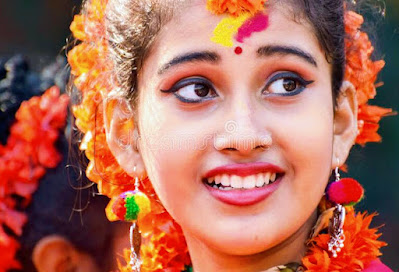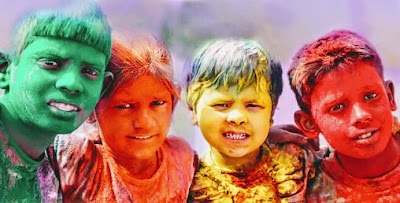Sensation based Vipassana- Mediator tries merely to search extraordinary, ordinary physical sensations as they naturally occur.
Sensation based Vipassana - First because it is by sensations that we experience reality directly.
Unless something come into contact with the five physical sense or the mind, it does not exist for us.
These are the gates through which we encounter the world, the base for all experience.
And whenever anything comes into contact with the six sensory bases, a sensation occurs.
The Buddha described the process as follows : "If someone takes two sticks and rubs one against the other, then from the friction heat is generated, a spark is produced.
The Buddha described the process as follows : "If someone takes two sticks and rubs one against the other, then from the friction heat is generated, a spark is produced.
In the same way, as the result of a contact to be experienced as pleasant, a pleasant sensation arises.
As the result of a contact to be experienced as unpleasant, an unpleasant sensation arises. As the result of a contact to be experienced as neutral, a neutral sensation arises.
The contact of an object with mind or body produces a spark of sensation. This sensation is a link through which we experience the world with all it's phenomena, physical and mental.
The contact of an object with mind or body produces a spark of sensation. This sensation is a link through which we experience the world with all it's phenomena, physical and mental.
In order to develop experiential wisdom. We must become aware of what we actually experience, that is, we must develop awareness of sensation.
Further, physical sensations are closely related to the mind, and like the breath they offer a reflection of the present mental state.
Further, physical sensations are closely related to the mind, and like the breath they offer a reflection of the present mental state.
When mental objects thoughts, ideas, imaginations , emotions, memories, hopes, fears - come into contact with the mind, sensation arise.
Every thought, every emotion, every mental action is accompanied by a corresponding sensation within the body.
Every thought, every emotion, every mental action is accompanied by a corresponding sensation within the body.
Therefore by observing the physical sensations, we also observe the mind.
Link here :-
Meditation - Buddhism Unique Technique .
Aware of sensations
Sensation is indispensable in order to explore truth to the depths.
Whatever we encounter in the world will evoke a sensation within the body.
Sensation is the crossroads where body and mind meet.
Although physical in nature, it is also one of the four mental processes .
Although physical in nature, it is also one of the four mental processes .
It arises within the body and is left by the mind.
In a dead body or inanimate matter, there can be no sensation, because mind is not present.
If we are unaware of this experience, our investigation of reality remains incomplete and superficial.
Just as to rid a garden of weeds one must be aware of the hidden roots and their vital function , similarly we must be aware of sensations, most of which usually remains hidden to us, if we are to understand our nature and deal with it properly.
Sensation occur at all times throughout the body.
Just as to rid a garden of weeds one must be aware of the hidden roots and their vital function , similarly we must be aware of sensations, most of which usually remains hidden to us, if we are to understand our nature and deal with it properly.
Every contact, mental or physical, produces a sensation. Every biochemical reaction gives rise to sensation .
In ordinary life, the conscious mind lacks the focus necessary to be aware of all but the most intense of them, but once we have sharpened the mind by the practice of anapanasati and thus developed the faculty of awareness ,we become capable of experiencing consciously the reality of every sensation within .
In the practice of awareness of respiration the effort is to observe natural breathing, without controlling or regulating it.
In ordinary life, the conscious mind lacks the focus necessary to be aware of all but the most intense of them, but once we have sharpened the mind by the practice of anapanasati and thus developed the faculty of awareness ,we become capable of experiencing consciously the reality of every sensation within .
In the practice of awareness of respiration the effort is to observe natural breathing, without controlling or regulating it.
Similarly, in practice of Vipassana, we simply observe bodily sensations.
We move attention systematically throughout the physical structure from head to feet and feet to head, from one extremity to the other.
We move attention systematically throughout the physical structure from head to feet and feet to head, from one extremity to the other.
But while doing so we do not search for a particular type of sensation, nor try to avoid sensations of another type.
The effort is only to observe objectively, to be aware of whatever sensations manifest themselves throughout the body .
They may be of any type : heat, cold, heaviness ,lightness, itching, throbbing, contraction,expansion, pressure, pain, tingling, pulsation, vibration, or anything else.
They may be of any type : heat, cold, heaviness ,lightness, itching, throbbing, contraction,expansion, pressure, pain, tingling, pulsation, vibration, or anything else.
The mediator does not search for anything extraordinary but tries merely to observe ordinary physical sensations as they naturally occur.
Nor is any effort made to discover the cause of a sensation.
Nor is any effort made to discover the cause of a sensation.
It may arise from atmosphere conditions , because of the posture in which one sits, because of the effects of an old disease or weakness in the body, or even because of the food one has eaten.
The reason is unimportant and beyond one's concern.
The reason is unimportant and beyond one's concern.
The important thing is to be aware of the sensation that occurs at this moment in the part of the body where the attention is focused.
Link here :-
101 Palash Flowers Celebrate Herbal Holi Festival.
The faculty of awareness is not yet fully developed, so we only experience the intense sensations and not the finer, subtler ones .
However, we continue giving attention to every part of body in turn, moving the focus of awareness in systematic order, without allowing the attention to be drawn unduly by the more prominent sensations.
However, we continue giving attention to every part of body in turn, moving the focus of awareness in systematic order, without allowing the attention to be drawn unduly by the more prominent sensations.
Having practiced the training of concentration. We have developed the ability to fix the attention on an object of conscious choosing.
Now we use this ability to move awareness to every part of the body in an orderly progression, neither jumping part a part where sensation is unclear to another part where it is prominent, nor lingering over some sensations, nor trying to avoid others.
Now we use this ability to move awareness to every part of the body in an orderly progression, neither jumping part a part where sensation is unclear to another part where it is prominent, nor lingering over some sensations, nor trying to avoid others.
In this way, we gradually reach the point where we can experience sensations in every part of body.
When one begins the practice of awareness of respiration, the breathing often will be rather heavy and irregular.
Attractions of the pleasant /unpleasant sensation
When one begins the practice of awareness of respiration, the breathing often will be rather heavy and irregular.
Then it gradually calms and becomes progressively lighter,finer,subtler.
Link here :-
Link here :-
Maha Shivaratri 2022 - Fasting And Worshiping .
Similarly, when beginning the practice of Vipassana meditation , one often experiences gross, intense, unpleasant sensations that seem to last for a long time.
At the same time, strong emotions or long - forgotten thoughts and memories may arise, bringing with them mental or physical discomfort, even pain.
The hindrance of craving, aversion, sluggishness, agitation, and doubt which impeded one's progress during the practice of awareness of breathing may now reappear and gain such strength that it is altogether impossible to maintain the awareness of sensation.
The hindrance of craving, aversion, sluggishness, agitation, and doubt which impeded one's progress during the practice of awareness of breathing may now reappear and gain such strength that it is altogether impossible to maintain the awareness of sensation.
Faced with this situation one has no alternative but to revert to the practice of awareness of respiration in order once again to calm and sharpen the mind.
Patiently, without any feeling of defeat, as mediators we work to re - establish concentration, understanding that all these difficulties are actually the result of our initial success.
Patiently, without any feeling of defeat, as mediators we work to re - establish concentration, understanding that all these difficulties are actually the result of our initial success.
Some deeply buried conditioning has been stirred up and has started to appear at the conscious level.
Gradually, with sustained effort but without any tension, the mind regains tranquility and one - pointedness.
Gradually, with sustained effort but without any tension, the mind regains tranquility and one - pointedness.
The strong thoughts or emotions pass away, and one can return to the awareness of sensations.
And with repeated, continues practice, the intense sensations tend to dissolve into more uniform, subtler ones and finally into mere vibrations, arising and falling with great rapidity.
And with repeated, continues practice, the intense sensations tend to dissolve into more uniform, subtler ones and finally into mere vibrations, arising and falling with great rapidity.
Link here :-
But whether the sensations are pleasant or unpleasant, intense or subtle, uniform or varied is irrelevant in meditation.
The task is simply to observe objectively.
Whatever the discomfort of the unpleasant sensations, whatever the attractions of the pleasant ones, we do not stop our work, do not allow ourselves to become distracted or caught up in any sensation, our job is merely to observe ourselves with the same detachment as a scientist observing in a laboratory.
Conclusion :- Sensation based Vipassana occur at all times throughout the body. Sensation is indispensable in order to explore truth to the depths. Every contact, mental or physical, produces a sensation. Every biochemical reactions gives rise to Sensation based Vipassana in Meditation.
Whatever the discomfort of the unpleasant sensations, whatever the attractions of the pleasant ones, we do not stop our work, do not allow ourselves to become distracted or caught up in any sensation, our job is merely to observe ourselves with the same detachment as a scientist observing in a laboratory.
Conclusion :- Sensation based Vipassana occur at all times throughout the body. Sensation is indispensable in order to explore truth to the depths. Every contact, mental or physical, produces a sensation. Every biochemical reactions gives rise to Sensation based Vipassana in Meditation.






